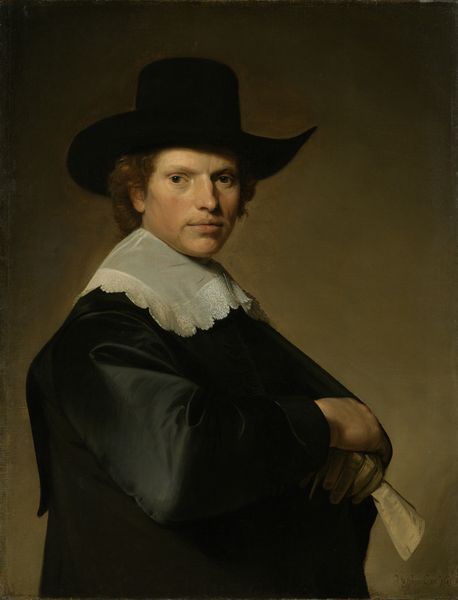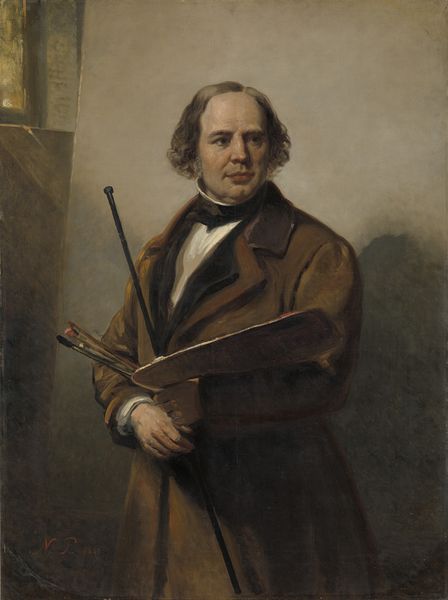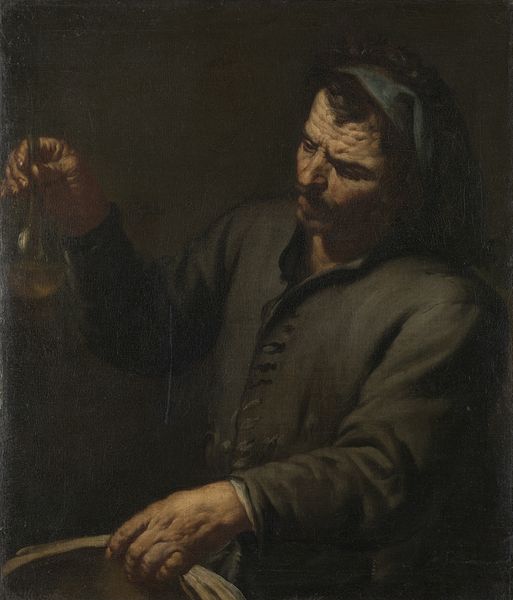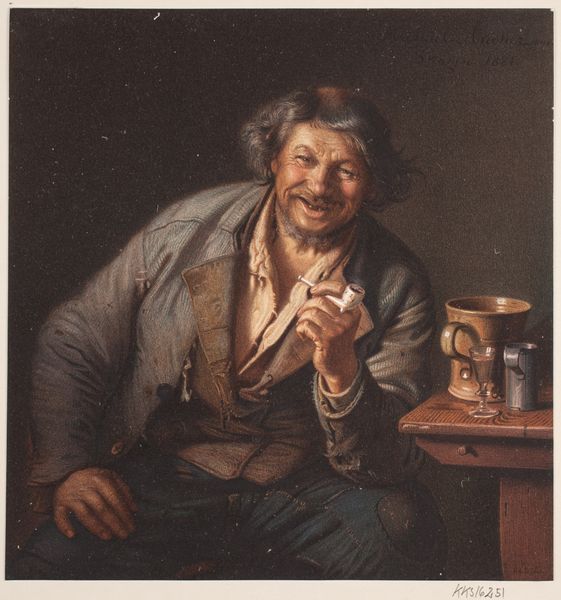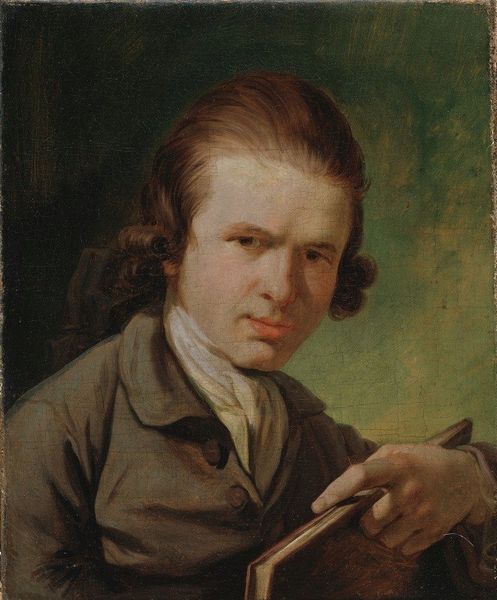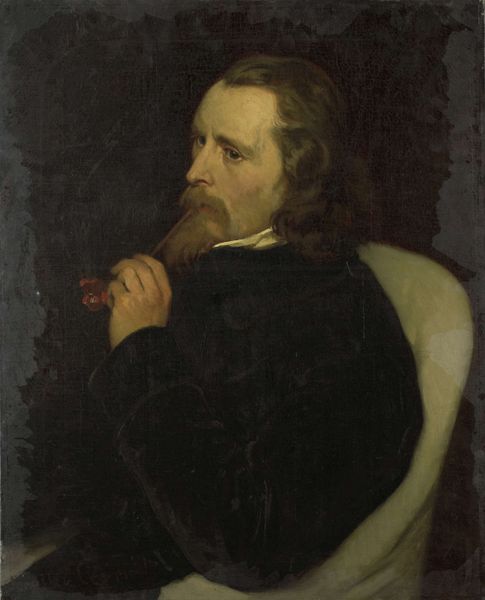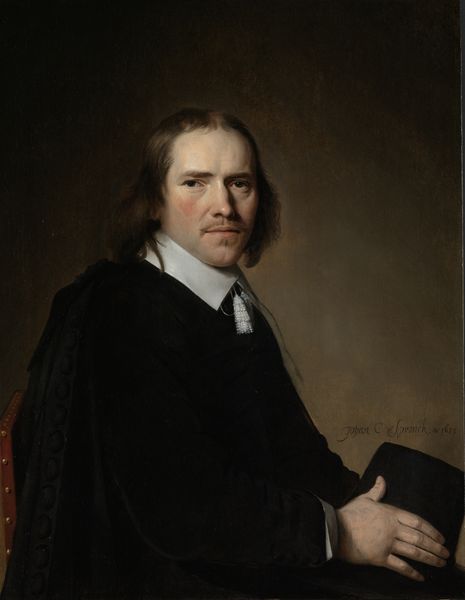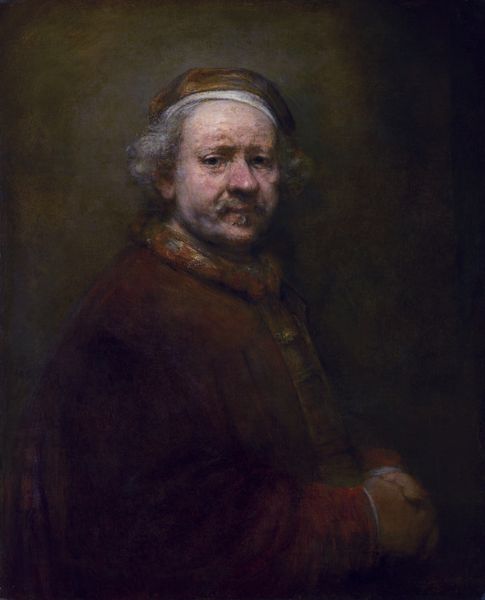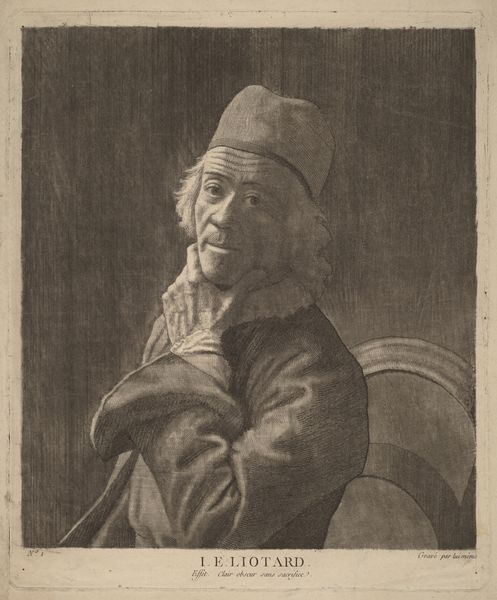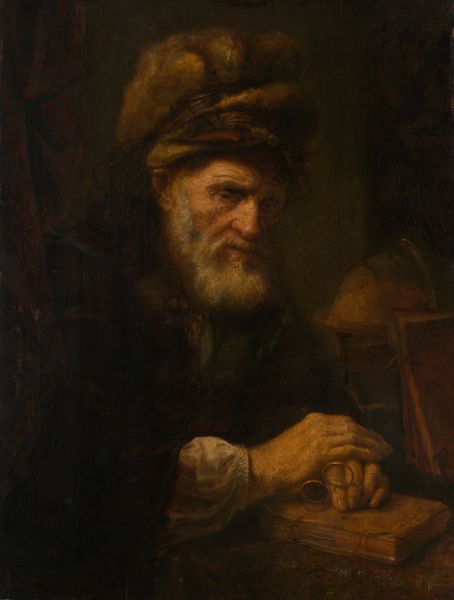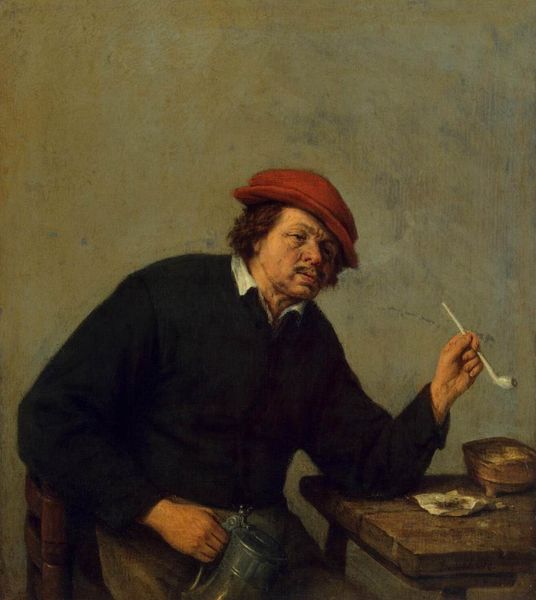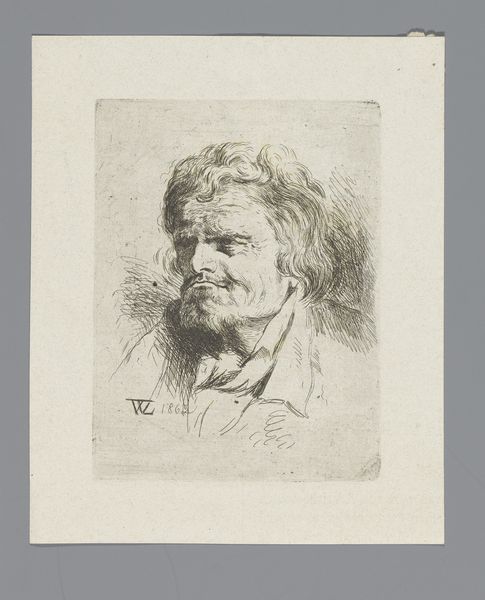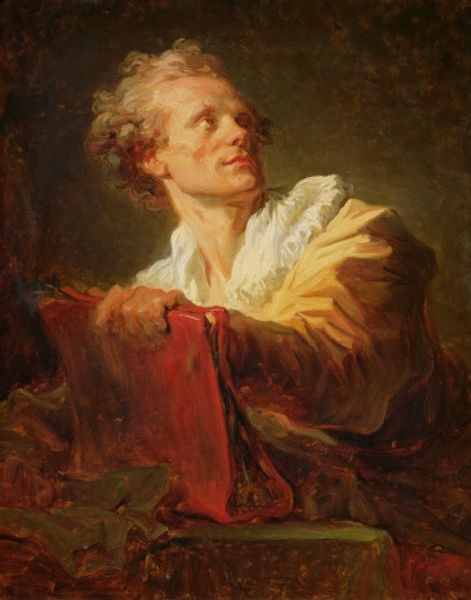
The Sculptor Jens Adolf Jerichau, the Artist's Husband 1846
0:00
0:00
painting, oil-paint, canvas
#
portrait
#
painting
#
oil-paint
#
figuration
#
canvas
#
romanticism
#
academic-art
Dimensions: 142 cm (height) x 95 cm (width) (Netto), 160.5 cm (height) x 113 cm (width) x 7 cm (depth) (Brutto)
Elisabeth Jerichau Baumann painted this portrait of her husband, the sculptor Jens Adolf Jerichau, in an unknown year using oil on canvas. It presents an intriguing view into the artistic and social circles of 19th-century Denmark. Baumann's decision to depict her husband, not just as a spouse but as a fellow artist, challenges the conventional gender roles of the time, where women were often relegated to domestic spheres. We see the sculptor with his tools: a stone in his left hand and a pipe in his right. The painting subtly critiques the established artistic institutions of the day and hints at the complex dynamics within artistic marriages. By portraying her husband in this manner, Baumann asserts her position within the art world. To fully appreciate this work, historians delve into letters, diaries, and exhibition records, to better understand the social conditions that shaped its creation and reception. The meaning of this portrait shifts as our understanding of its social and institutional context evolves.
Comments
statensmuseumforkunst almost 2 years ago
⋮
The portrait was painted in 1846, the year that Elisabeth Baumann married the Danish sculptor Jerichau. In the background we see the result of the inspired artist’s work, a preliminary study for his breakthrough work HERCULES AND HEBE from 1845. As a female artist who spoke German, had trained in Germa¬ny and painted in the German fashion Baumann had much to overcome when she made Copenhagen the base of her cosmopolitan artist’s life in 1848. She was called “an alien figure”, but she was no more alien than others who live suspended between two cultures. By the mid-19th century internationalism had become something to be frightened of, so her “otherness” as a woman and artist was accentuated, making her life and work an even more eye-catching contrast to the typically Danish tempered constraint.
Join the conversation
Join millions of artists and users on Artera today and experience the ultimate creative platform.

